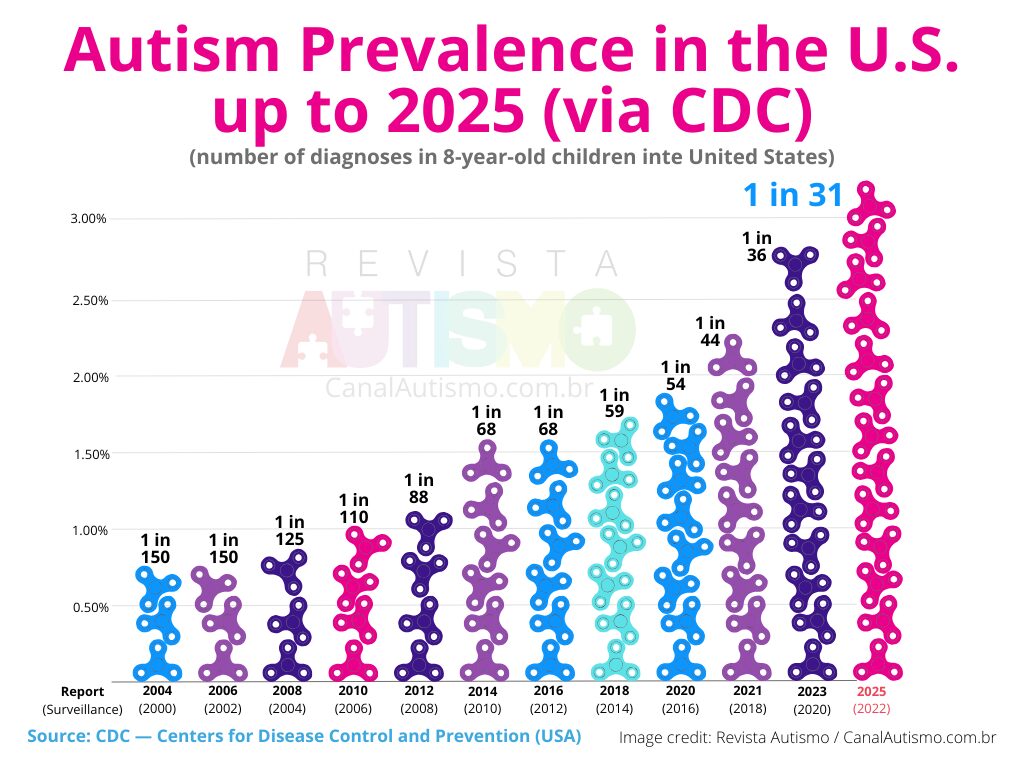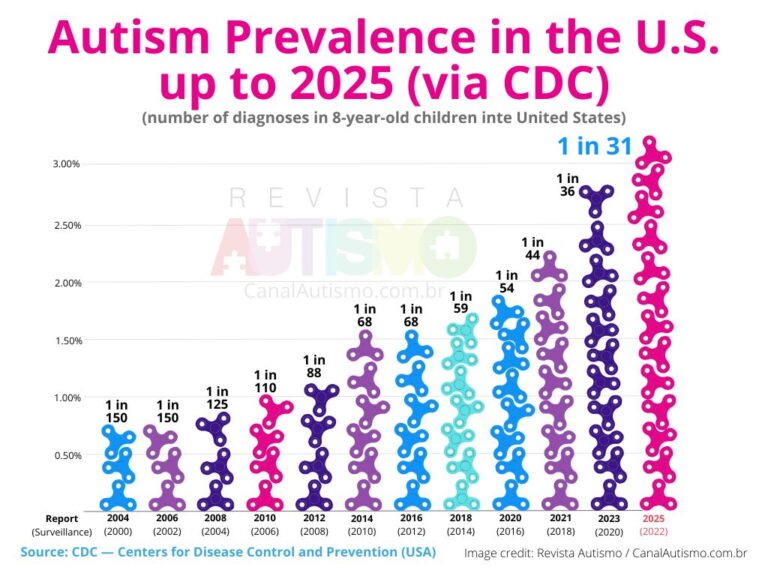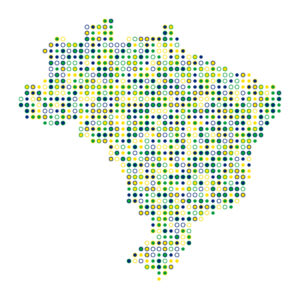Tempo de Leitura: 3 minutos
New biennial survey tracks 8-year-olds across 16 U.S. regions and highlights ethnic disparities and diagnostic trends
>> Portuguese version🇧🇷
By Francisco Paiva Jr.,
Editor-in-Chief of ‘Revista Autismo’ Magazine
from Brazil
Once again, the numbers are up. According to the latest biennial report by the U.S. Centers for Disease Control and Prevention (CDC), an estimated 1 in every 31 eight-year-old children in the United States has been identified with autism spectrum disorder (ASD). This equates to a prevalence of 3.22%, based on data from 2022 covering children born in 2014. The figure marks a continued upward trend from the CDC’s previous report in 2023, which indicated 1 in 36 children (2.78%).
Importantly, prevalence does not mean incidence. The increase reflects broader and earlier identification, not necessarily a surge in new cases.
In Brazil, where no national prevalence data currently exist, applying this same rate would suggest approximately 6.9 million autistic individuals, given the country’s 2024 estimated population of 212.6 million, according to IBGE (Brazilian Institute of Geography and Statistics).
Gender Gap Narrows Slightly
The study found the gender ratio continuing to narrow: boys were diagnosed 3.4 times more often than girls, compared to a 3.8 to 1 ratio reported in the previous cycle. This suggests modest improvements in the recognition of autism in girls, who are often underdiagnosed due to masking behaviors and diagnostic criteria traditionally modeled on male presentations.
Ethnic Disparities
This year’s data also revealed marked differences by race and ethnicity:
- Asian: 3.82%
- Black: 3.66%
- Hispanic: 3.30%
- White: 2.77%
For the first time, White children had the lowest prevalence among all ethnic groups. Experts suggest this may reflect a plateau in early diagnosis among White children, while diagnostic outreach continues to expand among historically underserved minority communities.
A Broader Definition of Autism
Dr. Alysson R. Muotri, a professor at the University of California, San Diego, and co-founder of Tismoo, a Brazilian startup focused on the health of autistic and other neurodivergent individuals (of which I am also a co-founder), noted that rising prevalence figures can create a misleading impression.
“This gives a false sense that autism is everywhere,” he said. “What we’re seeing is an expanded definition and broader diagnostic criteria, particularly since the DSM-5 in 2013. Classic autism, as it was defined 20 or 30 years ago, still represents around 1% of the population. The increase includes many individuals with milder symptoms and greater independence.”
Muotri cautioned that this trend could backfire. “While the broadened diagnosis initially helped increase awareness and access to support, it also dilutes the perceived severity of autism. This could lead some governments to deprioritize research or services, inadvertently neglecting those with the highest needs.”
Statement from U.S. Health Secretary
U.S. Secretary of Health and Human Services, Robert F. Kennedy Jr., referred to the rising prevalence as an “autism epidemic” and emphasized the need to investigate its underlying causes. He noted that President Trump has tasked him with leading efforts to better understand trends in childhood developmental conditions, with further findings expected later in the year.
For more details about the study, you can access the full CDC report here.

Bar chart illustrating autism prevalence in the United States, based on CDC data released from 2004 to 2025 — current estimate: 1 in 31 children.
Francisco Paiva Junior is a journalist, writer and autism advocate based in Brazil. He is the editor-in-chief of Revista Autismo, the leading autism magazine in Latin America and the only print and digital publication dedicated exclusively to autism in Portuguese. He is also the co-founder and CEO of Tismoo, a health tech startup focused on improving care for autistic and neurodivergent individuals and their families through science, data, content and technology. Most importantly, he is the father of two teenagers, including an autistic son — the true motivation e purpose behind his work.
 Francisco Paiva Jr.
Francisco Paiva Jr.



